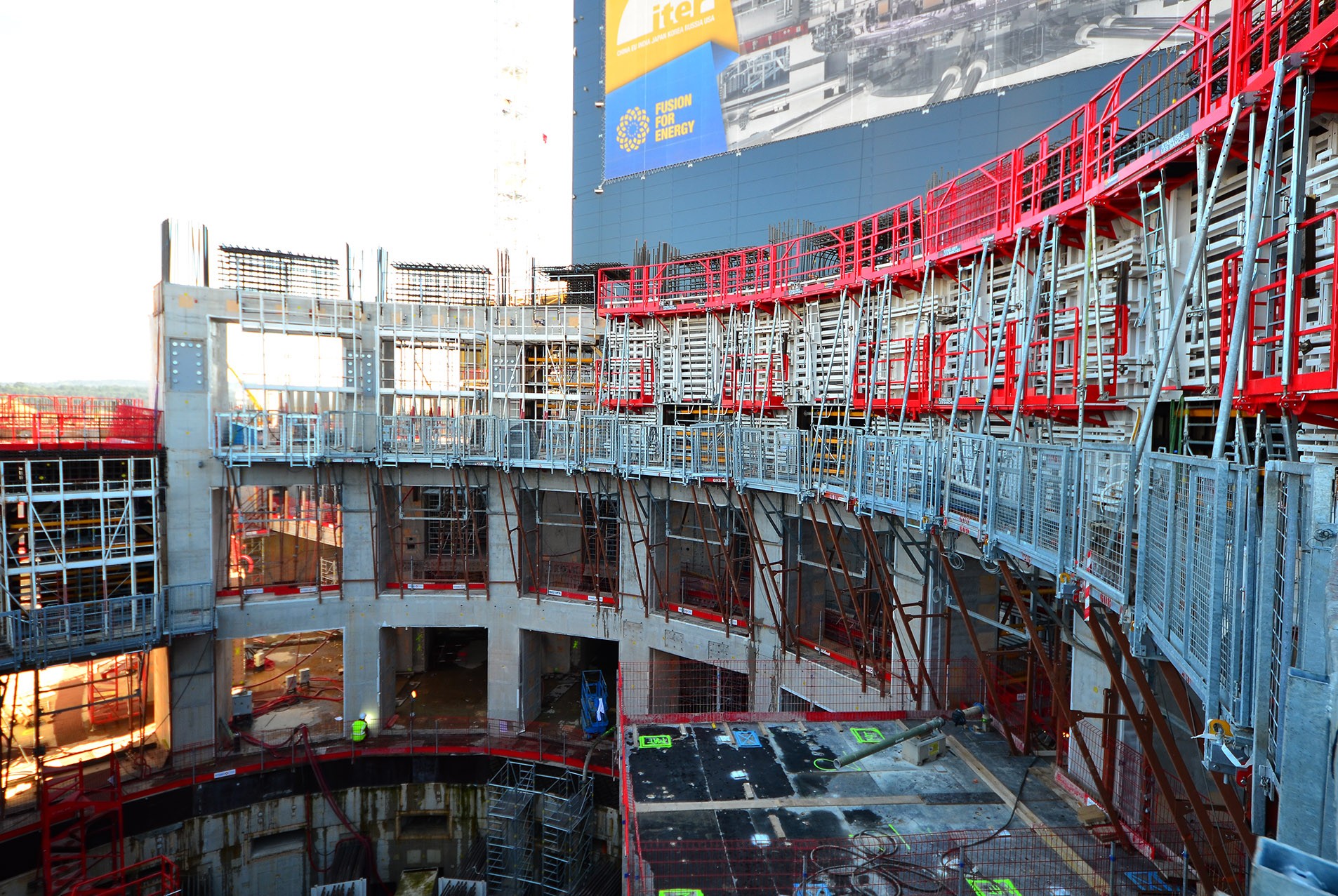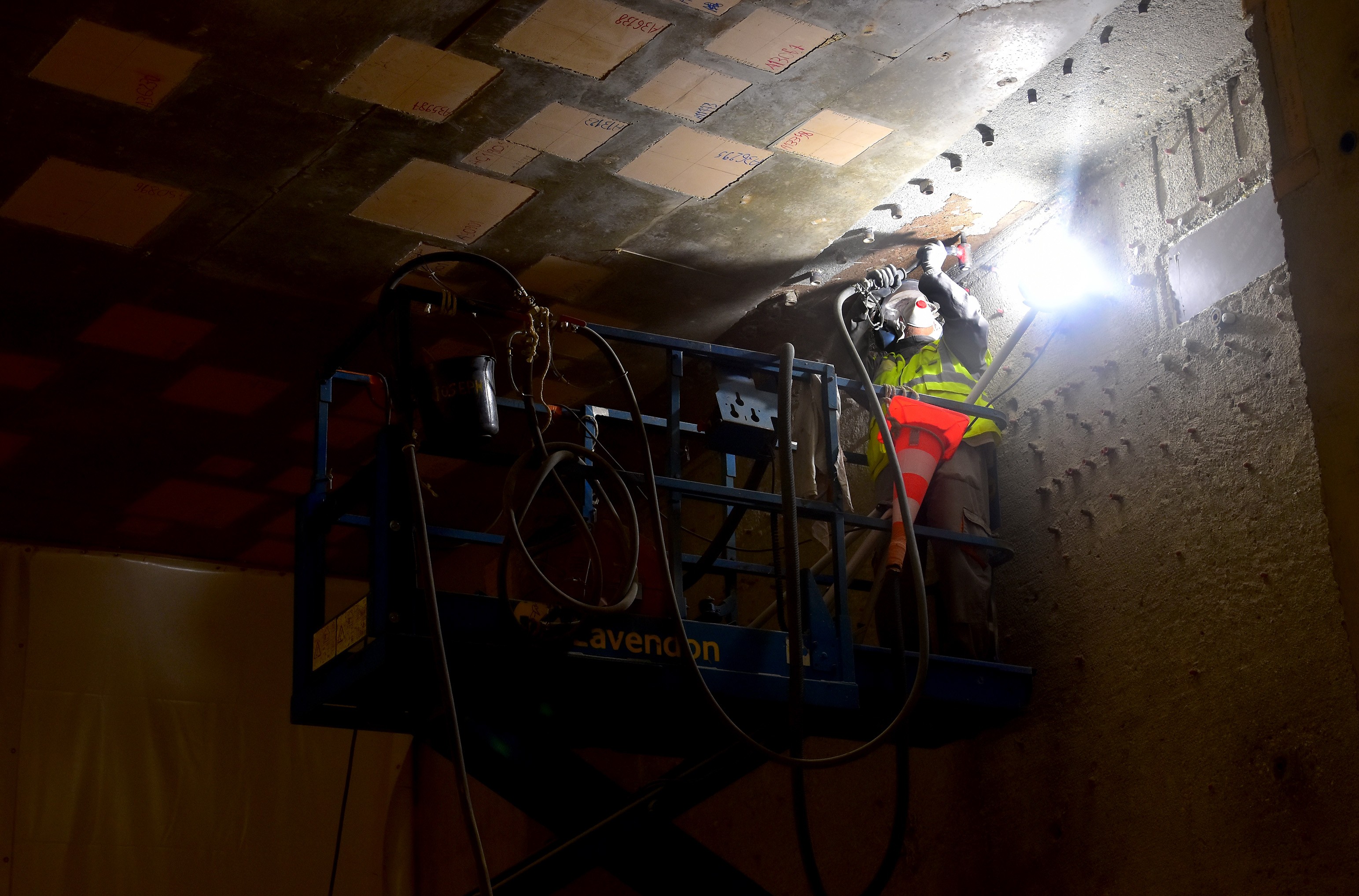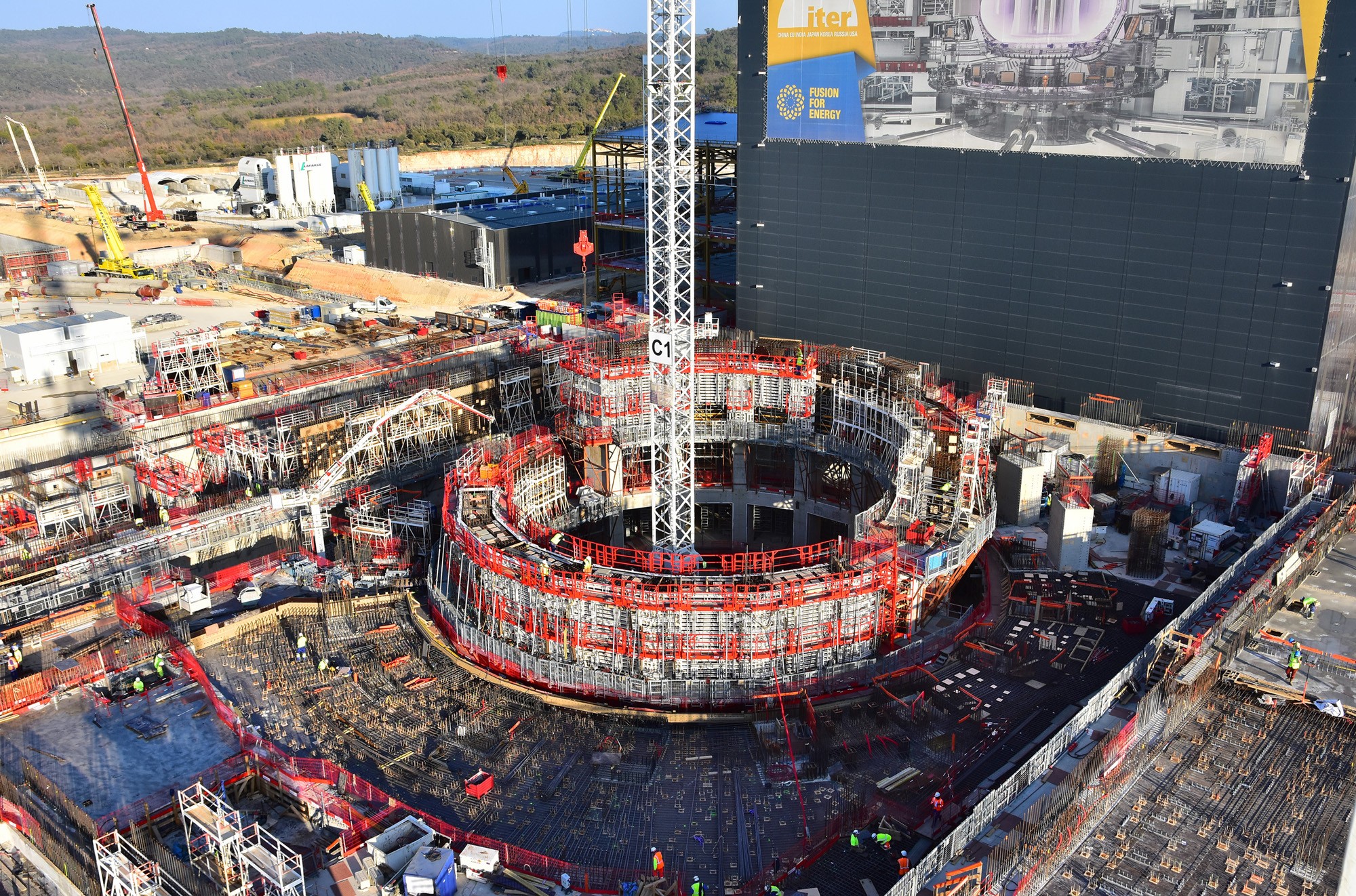Inside the arena
17 Apr 2017
A visit to the deep "well" where the ITER Tokamak assembly will begin next year begins with a journey underground ... through a maze of giant pillars, omnipresent scaffolding and spiral staircases.
All of the openings in the bioshield will allow access to the tokamak for all of the auxiliary systems needed to run the machine (fuelling, power, cooling, diagnostics, etc.). But the four ovoid-shaped openings that stand out in this picture are reserved for particular equipment—the powerful neutral beam injectors that will provide the bulk of ITER's heating power and the neutral beam used for diagnostics.
This is a place where one can get easily lost. Access, safeguarded pathways, and metal staircases move as work progresses and once-familiar itineraries often turn into dead ends.
But there's a reward to this erring. Having found (and climbed) the proper staircase, the view opens at last to what we have come to see: a concrete arena, bristling with steel rebar. The scene that sets the stage for one of the most awesome experiments in human history.
Soon, though, the view will change. The installation of a temporary steel cap—whose purpose is to protect teams below while allowing work to continue on the bioshield, above—will hide the lowest level of the Tokamak Pit from our view.







